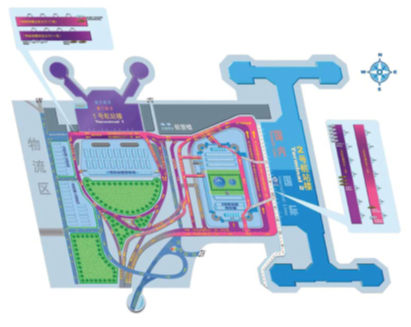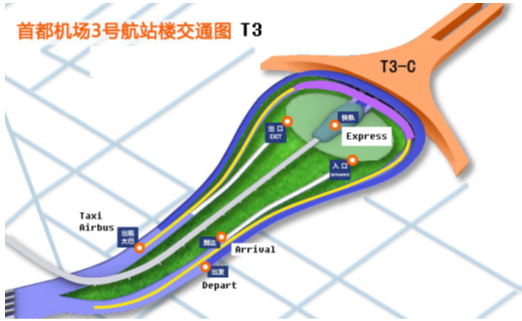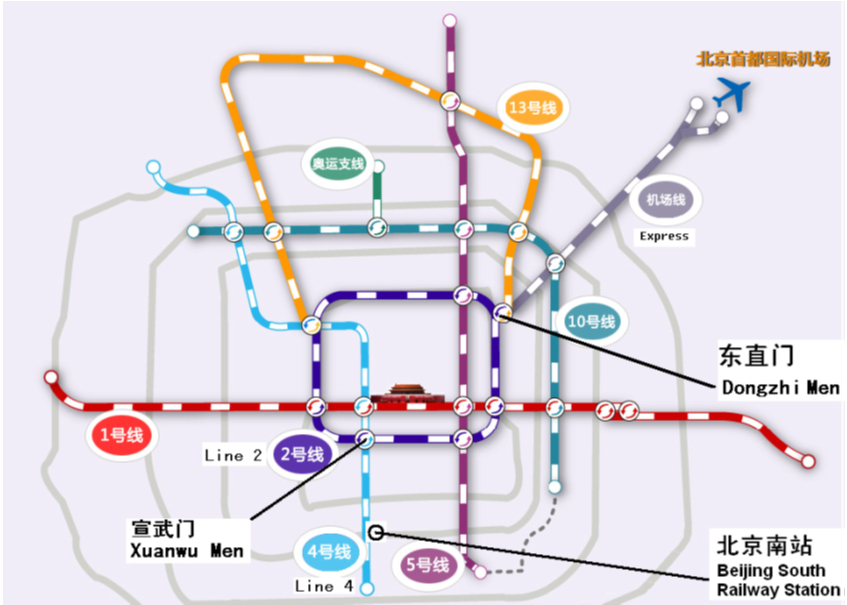|
Tianjin
Tianjin is one of China's four municipalities under the direct administration of central government. It is an international port city and the largest seaside city in the North of China, 137 km away from Beijing, the capital of China. Tianjin is a birthplace of modern industry of China: the first wrist watch, bicycle and television in New China were all made here. Since 1980s, Tianjin has turned itself into an important industrial base in North China. Tianjin is also a transportation hub with railway, waterway, highway and airway connecting other major cities in China and outside the country.
The name of Tianjin, which means “Emperor's port”, was adopted in the first year of Yongle Reign in Ming Dynasty. In the second year of Yongle Reign(1404), Tianjin became a walled garrison and began to be known as “Tianjin Wei”. In 1860 Tianjin was opened as a trading port. In the 1930s, it became the largest industrial and commercial city and financial center in the north of China. After the founding of the People's Republic of China in 1949, Tianjin became a municipality directly under the central government. After China adopted the policy of reform and opening up in 1978, Tianjin became one of the first coastal cities that are open to the outside world. Today, the city function according to the central government has been designated as becoming an international harbor city, economic center in north China, and an ecological city.
As one of the first cities open to the outside world, Tianjin has an excellent environment for business and investment. Up till now, among the top 500 world leading enterprises, more than 120 have invested in Tianjin. With the involvement of Binhai New Area in the national development strategy, Tianjin has become an area with the greatest attraction for investors and the highest investment profit rates in China.
Tianjin is a well known city with a long history and abundant resources. Panshan Mountain, the No. 1 Mountain in Capital's East; Dule Temple, one of the oldest wooden structures in China; Ancient Culture Street, full of ancient Chinese culture and Tianjin custom. More surprises are waiting for your exploration.
Attractions
lDule Temple
The Dule Temple is a Buddhist temple located in the town of Jixian, in Ji County, under the administration of the city of Tianjin, China. The temple is of historical as well as architectural significance. Its oldest surviving buildings are two timber-frame structures, the front gate and the central hall that houses a colossal clay statue of the goddess Guanyin. Both structures date back to the Liao Dynasty and are among the oldest surviving wooden buildings in China.
lShi Family Grand Courtyard
Shi Family Grand Courtyardis situated in Yangliuqing Town of Xiqing District, which is the former residence of wealthy merchant Shi Yuanshi – the 4th son of Shi Wancheng, one of the eight great masters in Tianjin. First built in 1875, it covers over 6,000 square meters, including large and small yards and over 200 folk houses, a theater and over 275 rooms that served as apartments and places of business and worship for this powerful family. Shifu Garden, which finished its expansion in October 2003, covers 1,200 square meters, incorporates the elegance of imperial garden and delicacy of south garden. Now the courtyard of Shi family covers about 10,000 square meters, which is called the first mansion in North China. Now it serves as the folk custom museum in Yangliuqing, which has a large collection of folk custom museum in Yanliuqing, which has a large collection of folk art pieces like Yanliuqing New Year pictures, brick sculpture.
Shi's ancestor came from Dong'e County in Shandong Province, engaged in water transport of grain. As the wealth gradually accumulated, the Shi Family moved to Yangliuqing and bought large tracts of land and set up their residence. Shi Yuanshi came from the fourth generation of the family, who was a successful businessman and a good household manager, and the residence was thus enlarged for several times until it acquired the present scale. It is believed to be the first mansion in the west of Tianjin.
Today, the Shi mansion, located in the township of Yangliuqing to the west of central Tianjin, stands as a surprisingly well-preserved monument to China's pre-revolution mercantile spirit. It also serves as an on-location shoot for many of China's popular historical dramas. Many of the rooms feature period furniture, paintings and calligraphy, and the extensive Shifu Garden.
lAncient Cultural Street
Tianjin Ancient Culture Street with 600 years history, standing in the area of key section in upstream of the Haihe River, is located in Nankai district of Tianjin. Covering an area of 224,200 sq meters, it used to be one of earliest water transport docklands in Tianjin where is one of the busiest cities of commerce and trade in history. As a cultural precinct, Tianjin Ancient Culture Street is well known by the local and overseas tourists. The two attractions, Yuan Huang Ge and Tian Hou Temple are two historic cultural relics in the list of city level ones reversed.
Tianjin Ancient Cultural Street rebuilt in 1980's is one of the great successes in the renovation and redevelopment. The whole block is still conserved the existing urban pattern and tissue of traditional Chinese layout. The lanes and houses in the Street are almost preserved in a good condition with Tianjin local feathers. In past time, whenever the day of 23th of March in lunar calendar was coming, a great ceremony would be held here, which it is said that it is the birthday of heaven Mother.
lGoubuli
Goubuli, also sometimes translated as Go Believe, is a brand of stuffed baozi from Tianjin, China. Founded in 1858, it is one of China's longest established brands. Each Goubuli bun has eighteen wrinkles. There are many explanations for the name Goubuli. The oft-quoted one relates to a poor village boy nicknamed Gouzhai. At 14, he became an apprentice at a food store. Thereafter, he set up his own shop specialising in selling steamed, stuffed baozi. His supposedly very delicious baozi soon gained immense popularity in a short period of time. As a result, Gouzhai got too occupied with his business to converse with his customers. So, they started to complain, “Gouzhai does not talk to people”.
Weather
Tianjin features a four season, monsoon-influenced climate, typical of East Asia, with cold, windy, very dry winters reflecting the influence of the vast Siberian anticyclone, and hot, humid summers, due to the monsoon.
|
Month
|
JAN
|
FEB
|
MAR
|
APR
|
MAY
|
JUN
|
JUL
|
AUG
|
SEP
|
OCT
|
NOV
|
DEC
|
|
°F |
26.8
|
23.2
|
43.7
|
68.9
|
79.0
|
86.2
|
87.8
|
86.4
|
79.3
|
67.5
|
51.1
|
39.0
|
|
°C |
-2.8
|
-4.9 |
6.5 |
20.5 |
26.1 |
30.1 |
31.0 |
30.2 |
26.3 |
19.7 |
10.6 |
3.9 |
Transportation
All the registrants should make their own local transportation in the city. Travel by taxi is the most convenient and faster option for the journey. Tianjin is not only famous for charming natural scenery but also for large numbers of taxis and cheapest taxis cost: RMB 2.00 per km with base price RMB9.00! Please prepare some changes in advance for taxi fee or subway in the staying in Tianjin. We suggest you wait for taxi at the airport designated taxi station. Please ask for a receipt with the taxi.
Transportations from/to Airport
• From/to Beijing Capital International Airport (北京首都国际机场)
Route 1: Traffic information about the Beijing Capital International Airport (北京首都国际机场) can refer Appendix (① – ② – ③ – ④).
|
1st Step:
|
Between Beijing Capital International Airport (北京首都国际机场) and Beijing South Railway Station (北京南站), you can take Capital Airport Line (Express) (机场线) or Taxi.
PS 1: If you take Capital Airport Line (Express) (机场线) for Beijing South Railway Station (北京南站), You will need to change Line2 (2 号线) at Dongzhi Men (东直门) and then change Line 4 (4 号线) at Xizhi Men (西直门). From Beijing South Railway Station(北京南站) to Beijing Capital International Airport (北京首都国际机场), you can take Line 4 (4 号线) and then change Line 2 (2 号线) at Xizhi Men (西直门), next change Capital Airport Line (机场线) at Dongzhi Men (东直门). The one-way fee is about 30 RMB.
PS 2: If you take taxi, the distance is about 37.2 km and you need to pay about 120 RMB.
|
|
|
|
2nd Step:
|
Between Beijing South Railway Station (北京南站) and Tianjin Railway Station (天津火车站), please take Jing-jin Inter city Train (京津城际列车).
PS: The train runs from AM6:13 to PM 10:56 with interval of 20 minutes every day and the one-way time is about 33 minutes. The fee is about 66 RMB.
|
|
|
|
3rd Step:
|
Between Tianjin Railway Station (天津火车站) and Hotel Nikko Tianjin (天津日航酒店), you can take Subway No.3 or Taxi.
PS 1: If you take taxi, the distance is about 4 km and you need to pay about 11 RMB.
PS 2: If you take Subway No.3, from/to Tianjin Railway Station (天津火车站) to/from Yingkou Ave station (营口道站), you need to pay about
2 RMB and you can take the Exit C or B3. You can walk through the Exchange
Shopping Mall to get to Hotel Nikko Tianjin.
|
|
|
Route 2: Traffic information about the Beijing Capital International Airport (北京首都国际机场) can refer Appendix (① – ④ – ⑤).
|
1st Step:
|
From/to Beijing Capital International Airport (北京首都国际机场), you can take Inter-Provincial Shuttle Beijing – Tianjin (省际巴士:北京-天津) to/from Tianjin Tianhuan Bus Station (天津天环客运站) which will take 2 hours and a half and 82 RMB.
PS 1: Beijing departure point: T1/T2: In front of Gate 15 on the 1st Floor of T2; T3: In front of Gate
1 on the 1st Floor, departure time is from 8:00 to 23:00 with about 1 hour interval.
PS 2: Tianjin departure point : Starting from the northeast corner of the crossing of Hongqi Rd (红旗路) and Anshan West Avenue (鞍山西道), Tianjin departure time is from 4:00 to 18:00 with about 1 hour interval.
|
|
|
|
2nd Step:
|
Between Tianjin Tianhuan Bus Station (天津天环客运站) with Nikko Hotel Tianjin (天津日航酒店), you can take taxi with about 15 RMB and 30 minutes.
|
|
|
• From/to Tianjin Binhai International Airport (天津滨海国际机场)
Route 1: Tianjin Binhai International Airport (天津滨海国际机场) – Nikko Hotel Tianjin (天津日航酒店) (① – ⑤).
|
|
PS: It will take 35 minutes by Taxi. The distance is about 15.2 km and you need to pay about RMB 35 Yuan.
|
|
|
Route 2: Airport Bus Line 4 (机场专线4) – Hubei Road (湖北路) – Changsha Road (长沙路) – Hotel Nikko Tianjin (天津日航酒店) (① – ② – ④ – ⑤).
Route 3: Airport Bus Line 5 (机场专线5) – Dazhigu Road (大直沽路) – Changsha Road (长沙路) – Hotel Nikko Tianjin (天津日航酒店) (① – ③ – ④ – ⑤).
|
|
PS: Route 2 or Route 3 will take take 1 hour and 50 minutes and total 6 RMB. The distance is about 32.5 km.
|
|
|
Transit position in Beijing Capital International Airport
|
Taxi Station:
T1: outside Gate 3 to 5 on F1
T2: Outside Gate 3 to 7 on F1
T3: Please refer to the signs
|
Inter-Provincial Shuttle Beijing – Tianjin:
T1/T2: In front of Gate 15 on the 1st Floor of T2
T3: In front of Gate 3 on the 1st Floor
|
Express Station Locations:
Terminal 2: B2 of Parking Garage No. 2
Terminal 3: F2 of Parking Garage No. 3
|
Appendix: Capital international Airport Terminals
 Terminal 1 and Terminal 2 |
 Terminal 3 |
|
|
 Beijing Subway |
|
|
 Tianjin Subway |
|
|
 The Hotel Surroundings Map |
|
|
Useful
Information
lLanguage:
Official language is Mandarin and most people also use their local dialect. The native language in Tianjin is Tianjinese. The standard spoken Chinese is Putonghua. English can be understood by many young people and is used in hotels and big restaurants. In all tourist hotels, staff can speak in English, Japanese and other languages. They can also write down addresses or instructions in Chinese for taxi drivers or others. In addition, roads in major cities are signposted in Pinyin, the official Romanization system of the Chinese characters, which makes it quite easy to get around with the help of a map.
lCurrency:
Renminbi (RMB) is the only currency to be used in China. RMB is also called Chinese Yuan. The unit of Renminbi is yuan and with smaller denominations called jiao. The conversion among the two is : 1 yuan =10 jiao. Paper notes are issued in denominations Aof 1, 5, 10, 20, 50 and 100 yuan. Coins are issued in denominations of 1 yuan; 5 jiao; 1 jiao.
Money exchanges by cash or travel’s cheques can be made at the branches of Bank of China at Tianjin Binhai International Airport, hotels and tourist stores. Please remember to keep the receipt to exchange back to foreign currency when leaving China.
lCredit
Cards: Visa, Master Card and American Express are the most commonly used in China. Cards can be used in most middle to top-range hotels, department stores, but they cannot be used to finance your transportation costs.
lTime:
GMT + 8 hours (the whole of China is set to Beijing time)
lElectricity:
Electricity is 220 Volts, 50 AC; plugs can be three-pronged angled,
three-pronged round, two flat pins or two narrow round pins.
lWater:
Bottled mineral water can easily be bought in all stores and street kiosks for
RMB3. And sometimes hotels provide it free of charge. Furthermore, potable
water is only available in a few 4 to 5 star hotels, while water in thermos
flasks in rooms is usually non-potable tap water.
lMeasurement:
In Metric system
lTipping:
Tipping is not customary outside of the foreign joint-venture hotels and is
officially discouraged. But hotel bellboys usually expect RMB 2 – 5 per bag.
lAttention:
Smoking is prohibited in public places in China, such as hospitals, office
buildings, theatres, cinemas, museums, planes, and trains
lHotlines:
110 - Police;119 – Fire;120 – Ambulance
Conference Information
Venues
IEEE ICMA 2014 will be held in the city of Tianjin, at Hotel Nikko Tianjin, which serves as both the official conference hotel and venue for the technical program.Hotel Nikko Tianjin is the best located hotel in Tianjin. It is conveniently positioned above Nanjing Road which is Tianjin’s premium shopping and entertainment district. All 373 guest rooms and suites are some of the most spacious in the city, offering unsurpassed luxury and providing all the latest in-room technology. Hotel Nikko Tianjin has a range of restaurants including Chinese, Western and Japanese to cater to every taste.
Chinese
Address
Cards
|
Hotel Nikko Tianjin
天津日航酒店
地址:中国天津市和平区南京路189号
Tel: 86-22-8319-8888
Fax: 86-22-8319-2266
|
Conference
Registration
A conference registration desk will be set up and opened at the Pre-Function Area of 6th Floor of Hotel Nikko Tianjin from August 3 (15:00) to August 6 (18:00) as followings.
August 3, 2014: 15:00 ~ 18:30 6F, Hotel Nikko Tianjin
August 4, 2014: 07:30 ~ 18:00 6F, Hotel Nikko Tianjin
August
5, 2014: 08:00 ~ 18:00 6F, Hotel Nikko Tianjin
August
6, 2014: 08:00 ~ 17:00 6F, Hotel Nikko Tianjin
Internet
Access
Free internet access will be provided during the conference period,
to the IEEE ICMA 2014 participants at the Conference Room on 6th
floors of Hotel Nikko Tianjin,
Tianjin. Broadband internet
access services are also provided at the conference hotel for a fee. For the fee
information, please contact the hotel you are staying directly.
Special and
Social Events
The
social events organized by the IEEE icma2014 include the conference reception,
the awards banquet, the conference registration, the farewell party, etc.
Conference
Reception
The Conference Reception
will be held from 17:30 to 18:30 on August
3, 2014 in Conference Room (Diamond 1,2,3),
6F of
Hotel Nikko Tianjin (天津日航酒店). All the conference participants are welcome to join this event.
Awards
Banquet
The Awards Banquet will be
held from 18:30 to 21:00 on August
5, 2014 in Conference Room (Diamond 1,2,3),
6F of
Hotel Nikko Tianjin (天津日航酒店). All the conference participants are welcome to join
this event.
Farewell
Party
The Farewell Party will be
held from
17:30 to 18:30 on August
6, 2014 in Conference Room (Diamond 1,2,3),
6F of
Hotel Nikko Tianjin (天津日航酒店). All the conference participants are welcome to join this event.
|